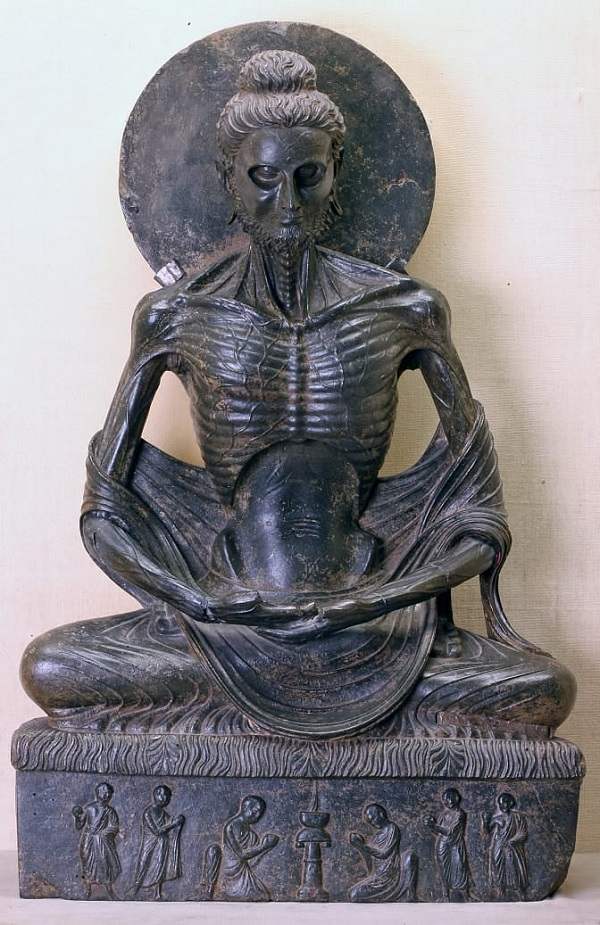In ancient India, the Shramana movement was a non-Vedic movement that existed before the advent of Vedic Hinduism in its original form. The Shramana tradition gave rise to the ideas of Samsara (the cycle of birth and death) and moksha (enlightenment-liberation from that cycle), along with Jainism, Buddhism, and yoga.
Shramanism was a free-thinking stream that ranged from materialism to spirituality, one of the three aspects of this philosophy, emphasizing thought, hard work and discipline. As Brahmanism, which derived its philosophical origins from Mimamsa, was one of the other two.
The third and most popular strand of Indian philosophical thought is Bhakti or theism, which is founded on the concept of God as it is known in most parts of the world.

The Shramanas saw the world as full of suffering (dukka). They practiced non-violence and severe penance in Forest. They believed in karma and moksha and considered rebirth undesirable.
The Vedas, on the contrary, believe in the efficacy of rituals and sacrifices as a major part of it, but the Shramana culture has been based on contemplation.
Vedic rituals had privileged the Brahmin and Kshatriya classes but this did not happen in the Shramana culture.
In Vedic culture, improving one’s life by pleasing God by offering Yajna was considered a major part of Karma, whereas in Shramana culture, knowledge and experience were given priority.
That’s why Buddha directly contradicts Vedas and almost Jainism also believed the same.
Beliefs and Concepts of Sramana Philosophy:
- Denial of creator and omnipotent Gods
- Rejection of the Vedas as revealed texts
- Affirmation of Karma and rebirth, Samsara and transmigration of Soul.
- Affirmation of the attainment of moksa through Ahimsa, renunciation and austerities
- Denial of the efficacy of sacrifices and rituals for purification.
- Rejection of the caste system
Jainism and Buddhism are the two main schools philosophies that have continued in India since ancient times.
This article is compiled from authoritative sources like certified books, expert notes etc. Definitely it is useful for civil service exam and other exams.

About the Author
Manish love to write for people and he is a Civil Servant. Users can follow Manish on Instagram 
भारत ने 5 नए रामसर स्थल (India’s New Ramsar Sites)
केंद्रीय पर्यावरण मंत्रालय द्वारा अंतर सरकारी संधि, रामसर संधि, के तहत पांच और भारतीय स्थलों…
1991 का भुगतान संतुलन का संकट [Balance of Payment Crisis]
1991 का भुगतान संतुलन का संकट (Balance of Payment Crisis) भारत के लिए एक बड़ा…
How Birsa Munda’s Revolt for Indigenous Rights
Indian tribal chieftain and liberation warrior Birsa Munda was famous. He was born on November…
ऑपरेशन विजय,1999 (Operation Vijay) [UPSC GS]
ऑपरेशन विजय (Operation Vijay) विजय दिवस के रूप में भारतीय सेना और वायु सेना द्वारा…
मिसाइल प्रौद्योगिकी नियंत्रण व्यवस्था (MTCR) [UPSC GS]
मिसाइल प्रौद्योगिकी नियंत्रण व्यवस्था (एमटीसीआर) MTCR 35 सदस्य देशों के बीच एक अनौपचारिक राजनीतिक समझ…
आग्सबर्ग की संधि (Augsburg ki sandhi) और धार्मिक युद्धों का सीमित विराम
आग्सबर्ग की संधि (Treaty of Augsburg) जर्मनी और यूरोप में धार्मिक युद्धों का विराम था…





![मिसाइल प्रौद्योगिकी नियंत्रण व्यवस्था (MTCR) [UPSC GS]](https://bugnews.in/wp-content/uploads/2022/03/missilesystem.jpg)
